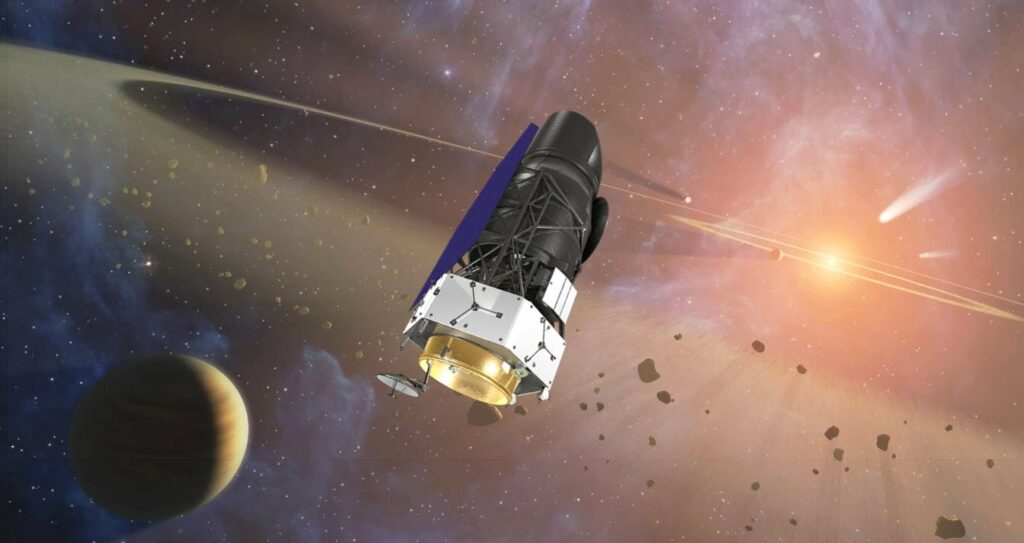Engineers of the Space Center named after Goddard successfully completed tests of the high-gain antenna, which would be installed on the new Roman infrared telescope (Roman Space Telescope).
Main tasks and mechanism of the Roman telescope
The Roman Space Telescope is designed to observe large-scale structures of the Universe and study the influence of dark matter on galaxies. Another mission objective is to search for and obtain direct images of exoplanets.

To complete the tasks, Roman will be equipped with a 2.4-meter mirror and will receive two scientific instruments: A 288-megapixel camera that allows to photograph regions of the sky with an area of 0.28 square degrees (this is a hundred times larger than the Hubble field of view) and a coronagraph — a device capable of “cutting off” the light of a star, which allows to directly study the moons orbiting it.
Roman Telescope Antenna
Currently, the new telescope is under construction and components are being tested. One of them is a high-gain antenna created by NASA engineers in collaboration with specialists from the Swedish company AASC. It is made of carbon composite material, which weighs very little, but at the same time is able to withstand significant temperature fluctuations. With a diameter of 1.7 meters, the mass of the antenna reflector is only 10.9 kg.

According to NASA representatives, Roman will receive a new communication system that will allow it to transmit unprecedented amounts of information to Earth. It is expected that the observatory will transmit about 1.4 terabytes of data per day of observations. For comparison, Hubble transmits 2.7 gigabytes of data to Earth every day, James Webb – 58 gigabytes of data.
To make sure that the antenna would cope with the task assigned to it, NASA subjected it to a series of comprehensive tests. The device underwent a series of vibration tests simulating startup conditions, and then was tested in a vacuum chamber. After that, the engineers measured the characteristics of the antenna in a radio frequency anechoic test chamber.
Currently, the launch of the new telescope is scheduled for May 2027. A Falcon Heavy rocket will be used for the mission.
According to https://www.nasa.gov
Follow us on Twitter to get the most interesting space news in time
https://twitter.com/ust_magazine

